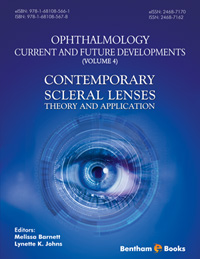Abstract
Contact lens optics are crucial for patient’s success and scleral lenses are not an exception. Scleral lenses provide an optimal and stable platform for housing standard and custom optics. Scleral lens optics are similar to corneal rigid gas permeable lens optics; however, there are additional variables of the post-lens tear film, decentration and tilt that are associated with scleral lenses. Unique fitting characteristics of scleral lenses may complicate empirical determination of lens power at this time. Practitioners may still need to use a diagnostic scleral lens and overrefract. Nevertheless, current scleral lenses can provide optical correction that rivals spectacles or other modes of contact lens correction. Furthermore, incorporation of higher order aberration correction on a rotationally and translationally stable scleral lens platform may eventually allow patients to achieve better visual acuity than other modes of correction. Looking ahead, the use of a scleral lens as a platform for magnification aids patients with low vision.
Keywords: Aberration, Bitangential, Centration, Correction, Decenter, Higher order, HOA, Optical system, Optics, Power, Prism, Prismatic, Refractive, Rotational, Spectacle, Stabilization, Tear lens, Telescope, Translational, Visual acuity.






















